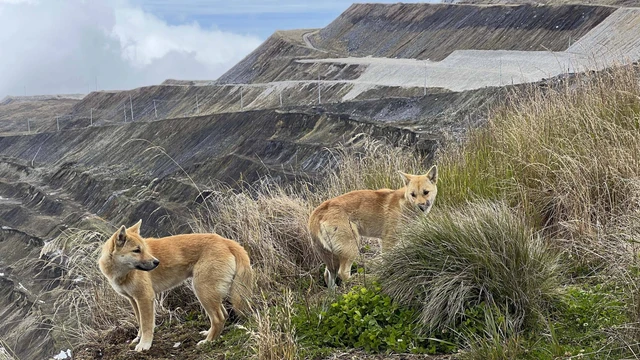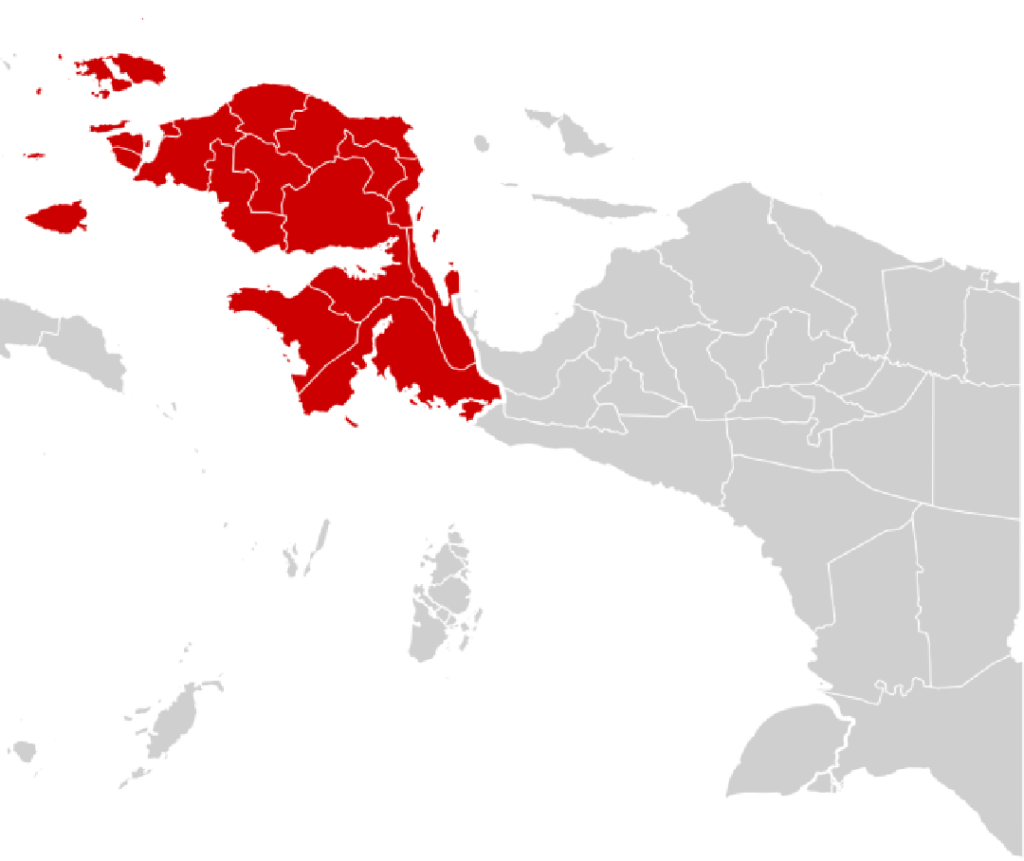At the heart of Papua, where mist rolls over jagged peaks and rainforests breathe life into the morning light, lies one of the planet’s last great ecological frontiers: Lorentz National Park. Here, far from the noise of cities and modern infrastructure, the forest speaks in the flutter of moth wings, the rustle of unseen reptiles, and—perhaps most hauntingly—in the song of a rare wild dog that once teetered on the brink of extinction.
In this vast, untamed sanctuary, researchers recently uncovered a discovery of monumental scale: 130 new species of flora and fauna. The announcement, spearheaded by PT Freeport Indonesia (PTFI) in collaboration with global and local scientists, reverberated far beyond Papua. It marked not just a scientific triumph but also a resounding counterpoint to long-standing criticisms about environmental degradation caused by mining activities in the region.
A Tapestry of Life Unfolds
The species were identified following decades-long ecological studies in and around Lorentz National Park, particularly near Mimika, where PTFI operates its Grasberg mine. These discoveries include 29 species of plants, 50 types of insects, 21 new crab species, two freshwater fish, and several amphibians—each carrying with them not just taxonomic significance, but a piece of Papua’s environmental identity.
For many, the idea that such biological richness could be unveiled within a zone adjacent to one of the world’s largest mining operations seems paradoxical. And yet, this juxtaposition is precisely what lends the story its emotional and scientific weight.
The Forest Sings Again
Among the discoveries, one creature has captured the imagination of the scientific community and general public alike: the New Guinea Singing Dog (Canis lupus hallstromi). Known for its unique and melodious vocalizations, this elusive canid was long believed to be extinct in the wild. Its reemergence—confirmed through DNA studies and ongoing ecological monitoring—represents one of the most striking signs of ecosystem resilience in recent history.
Photos and acoustic recordings captured by researchers show the dogs roaming free in upland forests, singing in harmonic howls that echo across the valleys. For ecologists, this is more than an emotional symbol; it’s a measurable indicator of environmental recovery, especially in regions previously disturbed by human activity.
An Unexpected Guardian: Mining Meets Conservation
The name Freeport has often evoked tension in conversations around environmental justice in Papua. The company’s massive Grasberg copper and gold mine has been the target of environmental campaigns for decades, often painted as a symbol of extraction at the expense of ecological health.
But the 130-species discovery has forced a more nuanced conversation.
Since 1997, PTFI has conducted extensive biodiversity assessments across multiple ecosystems within its operational footprint—ranging from mangroves and lowland tropical forests to subalpine and alpine zones. These efforts are not superficial: they are deeply rooted in scientific protocol, with multi-year field studies conducted in collaboration with institutions such as the Indonesian Institute of Sciences (LIPI), the University of Papua, and international partners including the South Australian Museum and the Natural History Museum of the UK.
The results have been nothing short of transformative. A previously unknown green tree frog, formally named Litoria lubisi, was among the many species identified through this work. Found near Grasberg, this amphibian now holds its place in the global taxonomy of life—a symbol of what still remains to be discovered in the wilds of Papua.
From Pit to Protection: A New Mining Philosophy
For decades, the Grasberg mine has been under scrutiny for its impact on the local ecosystem. But recently, PTFI has pivoted toward underground mining operations, drastically reducing surface disruption. In tandem, it has implemented large-scale reclamation and reforestation projects that have seen degraded zones return to life.
One striking example is the return of the singing dogs to areas around Grasberg, signaling the early stages of ecosystem balance restoration. As studies published by PTFI and its partners suggest, apex or keystone species like these dogs typically only reappear once food webs are intact and disturbance thresholds fall below a critical level.
PTFI’s environmental division has also reintroduced over 40,000 pig-nosed turtles (Carettochelys insculpta) into the wild, alongside various endemic birds, reptiles, marsupials, and insects. These actions are supported by in-house facilities such as a botanical research garden, herbarium, and butterfly conservatory used for breeding and public education.
This narrative contradicts the oft-repeated belief that mining and biodiversity conservation are mutually exclusive. If anything, it suggests that with rigorous scientific oversight, stakeholder transparency, and institutional accountability, progress and preservation may coexist—however imperfectly.
A New Frontier in Biodiversity Science
Lorentz National Park itself is a jewel of UNESCO World Heritage status, spanning over 2.35 million hectares. Its extraordinary ecological range includes coastal mangroves, lowland swamps, montane forests, and even glacial fields—making it the only protected area in the world that incorporates a full altitudinal transect from sea level to snow-capped mountains near the equator.
To this day, entire swathes of the park remain biologically uncharted. PTFI’s efforts in bordering areas have helped lay the groundwork for future exploration, offering not just specimens but also datasets that feed into global biodiversity databases. According to statements from PTFI executives, the company plans to continue supporting collaborative research initiatives, particularly with Indonesian universities, as part of its long-term sustainability roadmap.
These discoveries arrive at a pivotal moment: the world is in the midst of a biodiversity crisis, with an estimated 1 million species at risk of extinction within decades due to habitat loss, climate change, and pollution. In this context, the Lorentz findings offer more than just good news—they offer a blueprint for integrating conservation into development models.
Confronting the Criticism
Despite the breakthroughs, Freeport remains a polarizing entity. Indigenous communities, environmental watchdogs, and civil society groups have long raised concerns about the social and ecological costs of mining operations in Papua.
And those concerns are not unfounded. Legacy issues like sedimentation, habitat fragmentation, and toxic runoff from decades past remain part of the region’s environmental ledger. But PTFI appears to be moving in a direction that acknowledges these realities while also expanding its role in ecological stewardship.
Crucially, the company has opened the door to external audits, academic research, and stakeholder collaboration. Scientists not affiliated with PTFI have been invited to independently verify findings, increasing transparency and trust in the data being produced.
What the Forest Teaches Us
In the end, the story of 130 new species is more than a list of names in a research paper. It is a reminder of what remains hidden in the untouched parts of the world. It is a celebration of resilience—both of ecosystems and the people working to protect them. It is also an invitation to governments, corporations, and citizens to rethink the narrative that progress must come at the cost of nature.
As Papua’s forests continue to whisper their secrets to those willing to listen, one message rings clear: life finds a way. And sometimes, with care and intention, we can help it thrive.
Conclusion
The discovery of 130 new species in Lorentz National Park underscores Papua’s immense and still-unfolding ecological wealth. Far from being a zone of irreversible damage, the area around PT Freeport Indonesia’s operations now serves as a case study in how science, conservation, and even industry can intersect. While environmental concerns persist, these findings challenge simplistic narratives of destruction, revealing a more complex, hopeful picture—one where responsible stewardship and rigorous research can support biodiversity, even in the shadow of extractive activity. Nature, when respected, has the power to heal—and even sing again.


